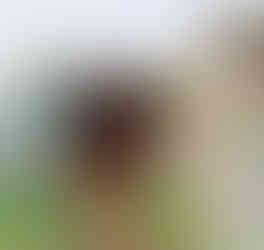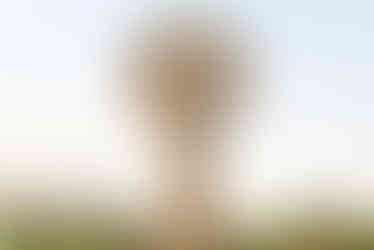Orchha: The hidden Gem of Bundelkhand - A Timeless Tapestry of History and Beauty : Part - II
- ashokkdas1958
- Jan 23
- 7 min read
Orchha : The Hidden Gem of Bundelkhand : Part - II : The Palaces and other monuments in Grand Fort Complex
In my previous post (Orchha : The Hidden Gem of Bundelkhand : PART- I : The Temples and Royal Chhatris outside the Walled Fort Complex https://www.ghumnechalo.in/post/orchha-the-hidden-gem-of-bundelkhand-a-timeless-tapestry-of-history-and-beauty-part-i-the-te), I explored the stunning Raja Ram, Chaturvuja, and Laxmi Temples in Orchha and the picturesque Royal Chhatris on the bank of River Betwa. Now, let's delve deeper into the walled Fort Complex and Palaces to uncover more architectural gems of Orchha. Join me as we explore the architectural wonders of the Bundela Dynasty.
Part II – The Palaces and other monuments in Grand Fort Complex
The Grand Fort and Palace Complex:
The centerpiece of Orchha, the grand fort, is a testament to the grandeur and opulence of the Bundela rulers. The walled Fort Complex stands strategically on a large island on the Betwa River and connected with the mainland through the Vir Singh Bridge from the main entrance to the Fort. Its imposing walls, intricate carvings, and majestic gateways offer a glimpse into the past. The sprawling walled complex of Orchha Fort houses several palaces, temples, and other structures, each with its own unique features and historical significance.
A. Raja Mahal Orchha : The King’s citadel
Built in the 16th century, this magnificent palace served as the primary residence of the Bundela royal family. Known for its intricate murals and frescoes depicting mythological and religious themes, the palace showcases the grandeur and beauty of Bundela architecture. The palace is adorned with stunning murals and frescoes that depict scenes from Hindu mythology, epics like Ramayana and Mahabharata, and daily life. The palace's architecture is a blend of Rajput and Mughal styles, featuring towering domes, ornate carvings, and intricate jali work. Raja Mahal offers a glimpse into the rich history of the Bundela dynasty and the cultural heritage of Orchha.
B. Rani Mahal: A Royal Abode
Nestled within the Orchha Fort complex, is a captivating monument that whispers tales of royal grandeur and devotion, the Rani Mahal. This architectural gem, built by Raghu Nath II of the Newalkar family, once served as the royal quarters for the wife of Raja Madhukar Singh. The last occupant of this palace was Rani Laxmi Bai herself, adding a layer of historical significance to its legacy. The Rani Mahal is renowned for its intricate carvings and majestic paintings, which transport visitors back to a bygone era of splendor. The interiors are adorned with beautiful artifacts that illustrate the holy epic Ramayana, reflecting the deep devotion of its royal inhabitants. The paintings and scriptures housed within its walls provide valuable insights into the lives of the royal family and the cultural practices of the time.
C. Sheesh Mahal : Shimmering Splendor
Known as the "Palace of Mirrors," this stunning palace is renowned for its intricate mirror work that adorns its walls and ceilings, creating a mesmerizing effect when light reflects off the mirrors. Built in the 17th century by Raja Udait Singh, the Sheesh Mahal was originally a summer retreat for the royal family. It later served as a venue for various ceremonial functions and gatherings. Today, the palace is a popular tourist attraction and has been converted into a heritage hotel, offering visitors a glimpse into the opulent lifestyle of the Bundela rulers. As a former royal residence, it offers a glimpse into the history of Orchha and showcases the architectural style of its era.
D. Jahangir Mahal: The Royal Retreat
Located in Orchha, Madhya Pradesh, India, Jahangir Mahal is a magnificent palace built in the 17th century by Raja Vir Singh Deo. It was constructed in honor of Mughal Emperor Jahangir during his first visit to the city. The palace is a three-story structure with intricate Indo-Islamic architecture, featuring beautiful turquoise tiles, hanging balconies, and spacious courtyards. Its grand domes were built according to Timurid customs, and its high position overlooking the Betwa River provided superior range for cannons. While Jahangir only stayed for one night, the palace remains a testament to the friendship between the Bundela ruler and the Mughal emperor. Today, it is a popular tourist attraction, offering visitors a glimpse into the rich history and architectural splendor of Orchha.
E. Rai Parveen Mahal: A Palace of Love and Poetry
Nestled within the walled town of Orchha, India and adjacent to the grand palaces, Rai Parveen Mahal stands as a testament to love, poetry, and architectural beauty. Built in 1618 by Prince Indrajit Singh for his beloved concubine Rai Parveen, the palace is a three-story structure renowned for its intricate Mughal architecture and vibrant murals. Rai Parveen was a renowned poet, dancer, and musician, whose beauty and talent captured the hearts of many, including Mughal Emperor Akbar. Legend has it that Akbar once summoned Rai Parveen to his court, but she refused to leave Orchha, citing her loyalty to her lover. Impressed by her intelligence and conviction, Akbar allowed her to return home. The palace itself is a marvel of design, featuring a central hall adorned with paintings depicting the various moods of Rai Parveen. A garden attached to the palace is divided into two parts, offering a serene and peaceful atmosphere. The semi-subterranean summer room is particularly noteworthy for its natural cooling system, which can reduce the temperature by more than 10 degrees.
F. Other important Monuments : Beside these grand palaces, there are other buildings built over centuries, offer a glimpse into the rich history, Military Significance, Religious Importance, Social Hierarchy and Everyday Lifestyle of the contemporary period. But unfortunately majority of these monuments have turned into ruins partially or almost fully. A notable fact is that most of these structures were built during Maharaja Vir Singh Deo regime. Here let me mention a brief summary of some of the important structures I could visit during my tour:
Monuments of Military Relevance:
Barud Khana (Gunpowder House): Placed slightly away from the palace complex this was a crucial part of the fort's defense system, storing the gunpowder necessary for cannons and other firearms.
Top Khana (Canon foundry) : Close to the main gate of the Palace Complex is the Top Khana which used to house the canons, the best artillery of the contemporary period.
Untt Khana (Camel Stable): This was a stable where camels were kept. Camels were once an important mode of transport and were used for both military and civilian purposes.
Structures of Religious Importance:
Deviji ki Mandir (Devi's Temple): This is a temple dedicated to a Hindu goddess. It's a place of worship for the local people and an important part of the town's religious landscape. This temple is still in use and revered as a holy place by the locals.
Vanvasi Ram Temple : Constructed during the time of Maharaja Vir Singh Deo is dedicated to Lord Ram.
Rardika Bihari Temple : A classical ancient temple built by Maharaja Vir Singh Deo is dedicated to Radha and Krishna.
Panchamukhi Mahadev Temple : This ancient 17th century temple, built under the patronage of Maharaja Vir Singh Deo is dedicated to Lord Shiva, This magnificent architectural marvel unfortunately has remained neglected.
Witness of Social Hierarchy:
Teen Dasiyon ka Mahal: Tucked away from the palace complex stands this small but beautiful palace like structure used by the female servants, the Dasis, of the Royal Family. This two storied building with three towers intact was built in 17th Century.
Raiman Dau ki Kothi: This building located close to the Raja Mahal was built in 17th Century was the residence of Raiman Dau, a high ranking military officer and influential minister of Bundela Kingdom.
Himma HamIr ki Kothi & Bakasrai ki Kothi : These kothis were built by Maharaja Vir Singh his close associates like Himmat Singh Hamir, Bakasrai Pradhan, etc structures were likely named after a significant figures, possibly of royal lineage or a high-ranking official or prominent individual. Its specific function is often lost to time.
Tamirat ki Kothi (Repair House): This complex was believed to be built in 17th Century during Maharaja Vir Sing Doe’s regime and used as residence of royal official looking after maintenance roads and state buildings. As the some suggests, portion of this structure was also used as a workshop for repairing the fort's weapons and other equipment.
Structure of Everyday Life activities :
Hammam Khana (Bathhouse): This structure was built by Maharaja Vir Singh as a part of preparations for Mughal Emperor Jahangir along with construction of Jahangir Mahal. This complex was built on a Persian design of royal hammam used for bathing and other hygienic practices equipped with intricate plumbing systems and heating mechanisms decorated water pool.
It is worthwhile to note that while this provides a general overview, the specific functions and historical significance of these structures may have evolved over time or may be subject to varying interpretations. Unfortunately, these smaller yet exquisite monuments and temples are gradually deteriorating due to neglect, overshadowed by the more renowned palaces and temples in the area. This often leads to fewer tourists visiting these hidden marvels.
Tips for Visiting Orchha
Accessibility: Orchha is well-connected to major cities by road, making it easy for tourists to reach. Though Orchha has its own railway station, Jhansi located at only 16 KMs from Orchha is a major rail junction connecting all major cities across India. Similarly, the nearest Airports are located at Gwalior and Khajuraho within a distance of 130-140 KMs from Orchha.
The best time to visit Orchha is between October and March when the weather is pleasant. Better to avoid the extreme conditions of hot summer months.
Hire a knowledgeable guide: A guide can explain the context and significance of the monuments enriching your understanding.
Orchha is a small town, so it is easy to explore on foot. However, if you prefer to use transportation, there are rickshaws and cycle rickshaws available.
Many of the monuments in Orchha are located in and around the Orchha Fort complex, so it is convenient to purchase a combined ticket for all the attractions.
Conclusion :
Orchha is a captivating destination that offers a unique blend of history, culture, and natural beauty. By exploring its magnificent monuments and immersing yourself in its rich heritage, you can experience a truly unforgettable journey. These magnificent structures offer a glimpse into the grandeur and opulence of the Bundela kingdom and are a testament to the enduring legacy of this fascinating dynasty. At the same time, much revered temples like Rama Raja Temple and Chaturbhuja Temple have made Orchha a prominent religious center of the Bundelkhand Region. In conclusion, Orchha is a must-see destination for anyone interested in Indian history, architecture and culture.
For blog posts on other interesting destinations, please visit my site www.ghumnechalo.in







































































































































Comments